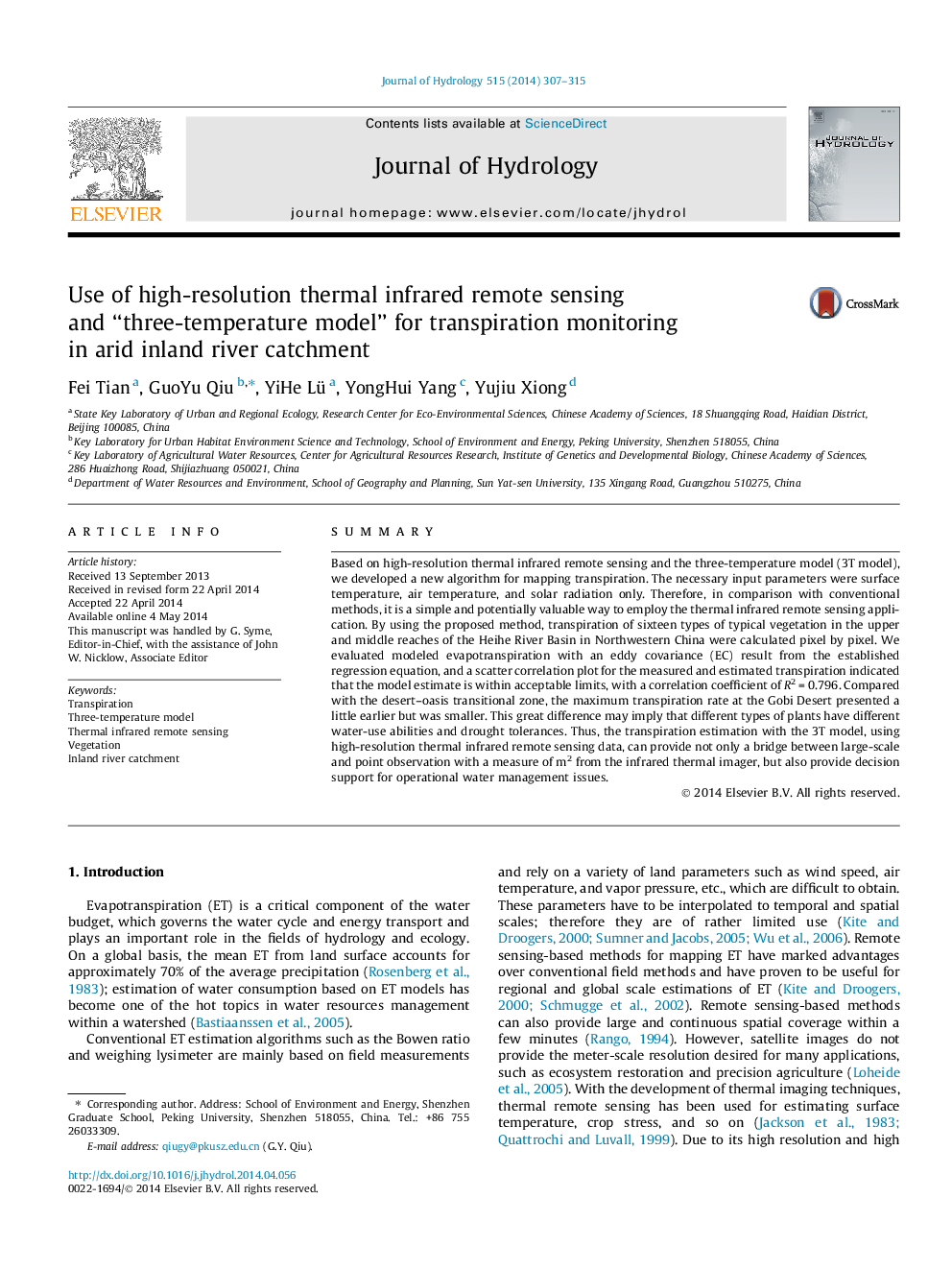| کد مقاله | کد نشریه | سال انتشار | مقاله انگلیسی | نسخه تمام متن |
|---|---|---|---|---|
| 6412878 | 1629933 | 2014 | 9 صفحه PDF | دانلود رایگان |

- We proposed a new algorithm to estimate transpiration rate.
- We evaluated modeled evapotranspiration with eddy covariance (EC) results.
- Transpiration of sixteen types of typical vegetation was calculated pixel by pixel.
- The transpiration rate at the Gobi Desert was the smallest but presented earliest.
SummaryBased on high-resolution thermal infrared remote sensing and the three-temperature model (3T model), we developed a new algorithm for mapping transpiration. The necessary input parameters were surface temperature, air temperature, and solar radiation only. Therefore, in comparison with conventional methods, it is a simple and potentially valuable way to employ the thermal infrared remote sensing application. By using the proposed method, transpiration of sixteen types of typical vegetation in the upper and middle reaches of the Heihe River Basin in Northwestern China were calculated pixel by pixel. We evaluated modeled evapotranspiration with an eddy covariance (EC) result from the established regression equation, and a scatter correlation plot for the measured and estimated transpiration indicated that the model estimate is within acceptable limits, with a correlation coefficient of R2Â =Â 0.796. Compared with the desert-oasis transitional zone, the maximum transpiration rate at the Gobi Desert presented a little earlier but was smaller. This great difference may imply that different types of plants have different water-use abilities and drought tolerances. Thus, the transpiration estimation with the 3T model, using high-resolution thermal infrared remote sensing data, can provide not only a bridge between large-scale and point observation with a measure of m2 from the infrared thermal imager, but also provide decision support for operational water management issues.
Journal: Journal of Hydrology - Volume 515, 16 July 2014, Pages 307-315